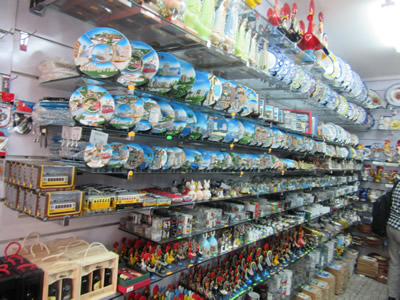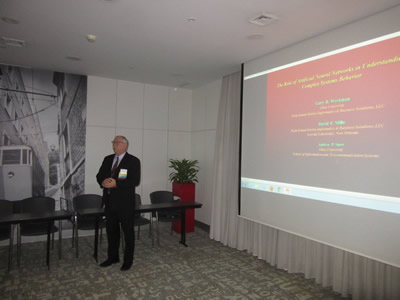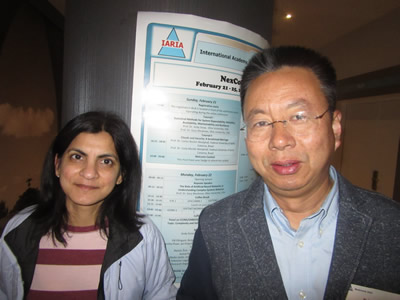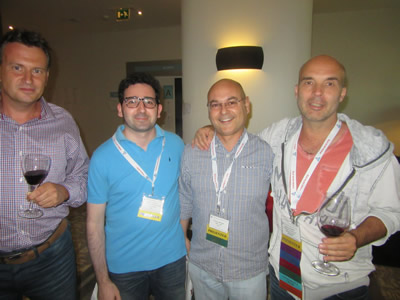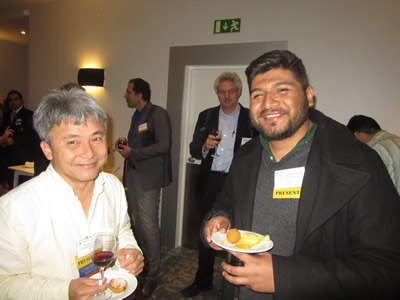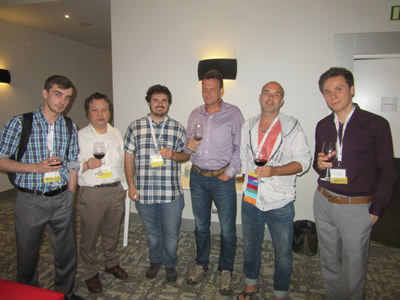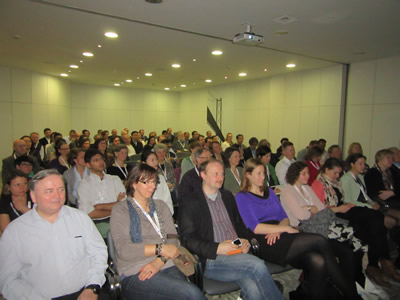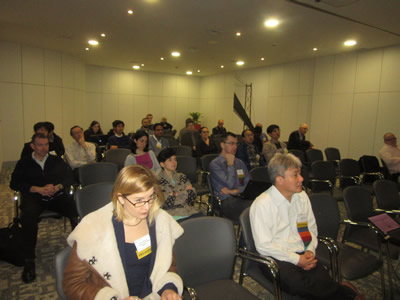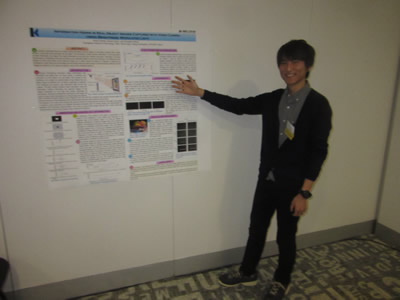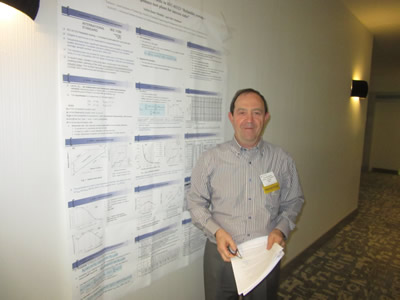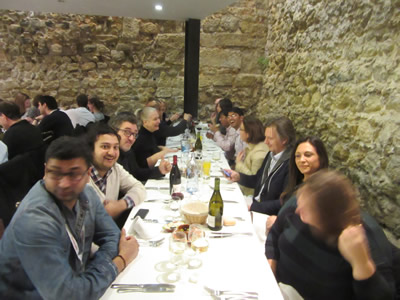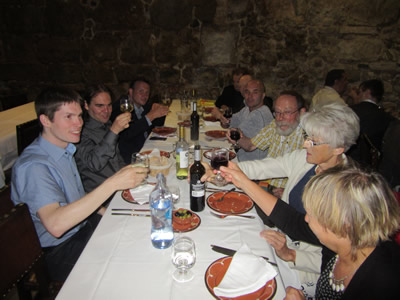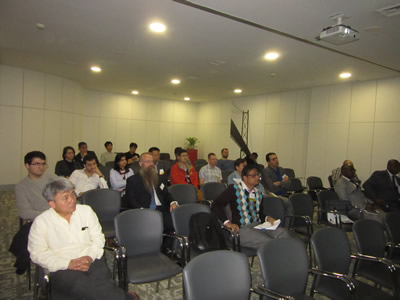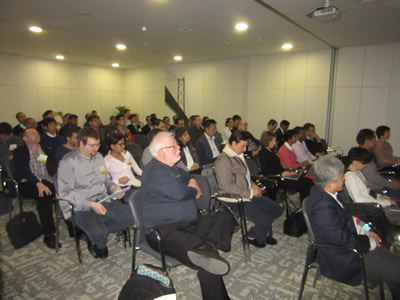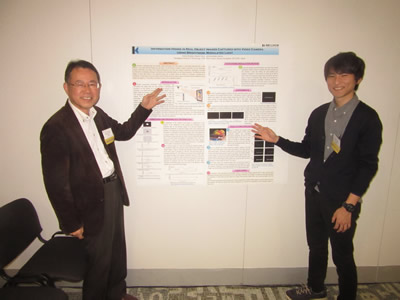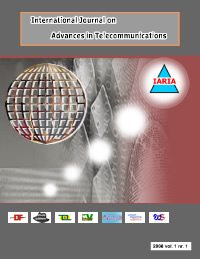AICT 2020 - The Sixteenth Advanced International Conference on Telecommunications
September 27, 2020 - October 01, 2020
AICT 2020: Call for Papers
The spectrum of 21st Century telecommunications is marked by the arrival of new business models, new platforms, new architectures and new customer profiles. Next generation networks, IP multimedia systems, IPTV, and converging network and services are new telecommunications paradigms. Technology achievements in terms of co-existence of IPv4 and IPv6, multiple access technologies, IP-MPLS network design driven methods, multicast and high speed require innovative approaches to design and develop large scale telecommunications networks.
Mobile and wireless communications add profit to large spectrum of technologies and services. We witness the evolution 2G, 2.5G, 3G and beyond, personal communications, cellular and ad hoc networks, as well as multimedia communications.
Web Services add a new dimension to telecommunications, where aspects of speed, security, trust, performance, resilience, and robustness are particularly salient. This requires new service delivery platforms, intelligent network theory, new telecommunications software tools, new communications protocols and standards.
AICT 2020 covers a variety of challenging telecommunication topics ranging from background fields like signals, traffic, coding, communication basics up to large communication systems and networks, fixed, mobile and integrated, etc. Applications, services, system and network management issues will also receive significant attention.
We are witnessing many technological paradigm shifts imposed by the complexity induced by the notions of fully shared resources, cooperative work, and resource availability. P2P, GRID, Clusters, Web Services, Delay Tolerant Networks, Service/Resource identification and localization illustrate aspects where some components and/or services expose features that are neither stable nor fully guaranteed. Examples of technologies exposing similar behavior are WiFi, WiMax, WideBand, UWB, ZigBee, MBWA and others.
Management aspects related to autonomic and adaptive management includes the entire arsenal of self-ilities. Autonomic Computing, On-Demand Networks and Utility Computing together with Adaptive Management and Self-Management Applications collocating with classical networks management represent other categories of behavior dealing with the paradigm of partial and intermittent resources.
Therefore, the Internet, converged networks, ad-hoc networking, sensor networks, and satellite communications require a management paradigm shift that takes into account the partial and intermittent availability of resources (pi-resources), including infrastructure (networks, computing, and storage) and service components, in distributed and shared environments. The term pi-resources becomes the central concept in next generation networks, where optimization, shared resources, mobile resources, autonomic resource or service replacement, self-isolation, partial availability and other features become inherent. A resource is called partial (p-resource) when only a subset of conditions for it to function to complete specification is met, yet it is still able to provide (potentially degraded) service, while an intermittent or sporadic resource (i-resource) will be able to provide service for limited and potentially unpredictable time intervals only.
Partial and intermittent services (pi-services) are relevant in environments characterized by high volatility and fluctuation of available resources, such as experienced in conjunction with component mobility or ad-hoc networking, where the notion of traditional service guarantees is no longer applicable. Other characteristics, such as large transmission delays and storage mechanisms during the routing, require a rethinking of today's paradigms with regards to service assurance and how service guarantees are defined.
E-learning refers to on-line learning delivered over the World Wide Web via the public Internet or the private, corporate intranet. The workshop on e-learning on telecommunications event is intended to provide an overview of technologies, approaches, and trends that are happening right now.
The constraints of e-learning are diminishing and options are increasing as the Web becomes increasingly easy to use and the technology becomes better and less expensive. As the ease of execution increases, more and more institutions are discovering the benefits of delivering training via the Web. Interest in e-learning is at an all-time high, and the workshop wants to serve as a stimulus to accelerate collaboration and dialog among the e-learning providers, trainers, IT researchers and the lifelong, self-directed learners. Such business trends as an increased global economy, the pressures for rapid development, the necessity of teamwork are shaping the present state and the future of e-learning. Employees are increasingly aware that they must continue to update and advance their skills if they want to understand the state-of-the-art technologies and remain valuable to their organizations. This means that learners will be more and more self-directed, and they will want access to what they need when they need it. The Internet based educational materials and the e-learning providers have to meet this demand.
The workshop focuses on the latest trends in e-learning and also on the latest IT technology alternatives that are poised to become mainstream strategies in the near future and will influence the e-learning environment.
The conference participants will consider how, when and where e-learning helps to solve the training needs, what are the challenges of creating and managing vast amounts of e-learning, how the upcoming IT technologies influence e-learning and how the Web based educational materials should be developed to meet the demands of the long-life, motivated and very often self-directed students.
Since A K. Erlang developed fundamental theories in the field of teletraffic several major technology and market evolutions challenged the academia and industry. Traffic is one of the basic aspects when designing, controlling and measuring the performance of a network or interoperating networks. Transport technologies evolved from heterogeneous to homogeneous, yet co-exiting solutions are everywhere. Speed and bandwidth dramatically improved, changing the way the traffic is modeled and interpreted. New access technologies and their co-existence raise aspects of traffic aggregation and filtering. Wireless and mobile technologies ensuring mobile communications as well as multiple user profiles and locations impose new business models.
The conference also addresses teletraffic modeling and management. It covers traffic theory, traffic control and QoS, performance evaluation methods, network design and optimization of wired and wireless networks, and simulation methodology for communication networks. Results are expected to enrich the theory and practice for designing and building large and manageable networks and services.
We solicit both academic, research, and industrial contributions. We welcome technical papers presenting research and practical results, position papers addressing the pros and cons of specific proposals, such as those being discussed in the standard fora or in industry consortia, survey papers addressing the key problems and solutions on any of the above topics short papers on work in progress, and panel proposals.
Industrial presentations are not subject to the format and content constraints of regular submissions. We expect short and long presentations that express industrial position and status.
Tutorials on specific related topics and panels on challenging areas are encouraged.
The topics suggested by the conference can be discussed in term of concepts, state of the art, research, standards, implementations, running experiments, applications, and industrial case studies. Authors are invited to submit complete unpublished papers, which are not under review in any other conference or journal in the following, but not limited to, topic areas.
All topics and submission formats are open to both research and industry contributions.
AICT 2020 conference tracks:
Trends on protocols and communications models
DNS resolvers; Scheduling streamed information; Adaptive streaming; TCP-based streaming; Impatience in cellular networks; Analysis of transient phases; Setup delays servers; Spatial-temporal traffic models; Stability models; Rendezvous algorithms; Network coding; Opportunistic protocols; Cooperative data exchange; Energy efficient-contention protocols; Named data networking; Adaptive contention window; Network mobility models; Spectrum aggregation schemes; Smart meters; Dynamic load; Environment adaptive routing protocols; Geographic and virtual coordinates; High spectral efficiency communications; Power constraints; Video broadcast; Multicell networks; Energy harvesting; Interference avoidance; MIMO and massive MIMO; Channel feedback protocols; Computation offloading; Path-cooperative transport
New telecommunications technologies
Software defined data centers; Botnet in SDNs; Software defined 5G networks; HetNets and 5G; Smart buildings and IoT; Secure SDNs; Standardization for IoTs; 4G to 5G translation; Managing 5G LTE-Advanced networks; LTE heterogeneous networks; LTE-R measurements; Scheduling for LTE-Advanced; Traffic with Big Data; QoE-aware radio; QoS and QoE in LTE networks; Telecommunications in Smart Cities; IoT virtual networks; Device-to-device Internet; Mobile clouds; Smart and sustainable cities; Public data centers; Traffic profiles in data centers; Smart energy; Car Connectivity; Green communications systems
Trends on telecommunications features and services
Cloud services for communities and citizens; Mobile location analytics; Video distribution networks; Dynamic video streaming; Cross-layer energy optimization; Power-aware media; Digital platforms regulation; Content delivery networks; M2M protocols; Identity management; Converged communication networks; Web-based communication services; Node localizations; Indoor positioning; Management plane; Community structure detection; Preventing DDoS attacks; Multifactor authentication; Man-in-the-middle attacks; Bundle streaming service; Self-organizing cloud cells; Soft-coded and hard-coded relaying
Signal processing, protocols and standardization
Standardization (IEEE 802.17, Policy Models, Etc.); IEEE 802.11 engineering; Telecommunications protocol engineering; Future networks: protocol and standards;
Standardization (IEEE 802.15, IEEE 802.16);
Communication theory, signal processing, modulation;
Modulation, coding and synchronization;
Propagation, antennas and channel characterization;
Signal separation and Interference rejection;
Critical infrastructure protection
Architectures and communication technologies for 4G and 5G wireless networks
5G technologies and networking; Mobile network expansion solutions (small cells, Cloud-RAN, etc.); 5G radio-access networks (RAN); D2D communications in cellular networks; Aggregation techniques and interaction with unlicensed wireless technologies; Communications over mmWave spectrum; End-to-end network architecture and infrastructure; Interworking between heterogeneous networks and technologies; Automated management, orchestration and operation of network functions; Software defined networking (SDN) and 5G; Mobility management, energy efficiency, power cost reduction in 5G networks; Network function virtualization (NFV) of small cells; Self-organizing network functionalities for virtualized small cells; The role of open source software in 5G; Indoor/outdoor positioning; Massive connectivity handling; Technoeconomics of future mobile networks; New telecommunications business models
Ad Hoc, autonomic and sensor networks
Autonomic home networking;
Sensor, mesh, and Ad hoc networks;
Programmable networks;
Active networks;
Self-organization and network reconfiguration;
Partial and intermittent resources and services;
Unicast and multicast routing;
Radio resource sharing in wireless networks;
Energy-efficient communications;
Vehicular Ad hoc networks;
Underwater sensor networks;
Emerging sensor technologies;
Intelligent video surveilance;
Multi-sensor surveillance;
Wireless technologies
4G, 5G and 6G Mobile communications services; Evolution from 4G to 5G and beyond;
Wireless multimedia and networks and systems;
Cellular and Ad hoc networks;
Mobile broadband technologies;
Mobile software (agents);
Wireless access (WPAN, WLAN, WLL);
Wireless communications antennas and propagation and transmission technologies;
Vertical, horizontal and diagonalhandover;
Broadband wireless technology (HSDPA, HSUPA, LTE, Wimax, Wiran);
Cross-layer modeling and design;
Heterogeneity and diversity;
Ultra-wideband communications (UWB);
Wireless hacking;
Management, operation and control networks
Monitoring telecommunicaitons systems;
Network management contingency challenges;
Real-time traffic and QoS;
Performance and QoS, traffic engineering (MPLS, Diffserv, Intserv, Etc.);
Telecommunications management and control of heterogeneous networks;
Mobility control and mobility engineering;
Mobile video surveillance;
Mobility and QoS management;
Communications networks security;
Information security;
IPR and network security;
Core technologies and access technologies and networks
Wireless-fiber convergence; Metro/Access networks; Broadband access networks and services; Next Generation Networks and technologies; Future Internet; Inteligent & Smart networks; Grid, Cluster and Internet computing; Designing and management of optical networks; Performance of optical networks; Future technologies in optical communications; PLC (Homeplug, OPERA, UPA, CEPCA, IEEE, HD-PLC Alliance);
Future applications and services
Service-oriented architectures;
E-Learning and mobile learning on telecommunications;
SOHO (Small Offices/Home Offices;
Emerging telecommunications software tools;
Object and component technologies in telecommunication software;
Platforms for Web Services-based applications and services;
Web Services communications, applications, and performance;
Applications in telemedicine; Security and trust in future services applications;
Optical Technologies
Optical internetworking architectures; Novel architectures for optical routers and switches; Optical packet / burst switching; Optical multi-wavelength label switching; Optical network performance modeling; Optical network control and management; Measurement, monitoring and supervision techniques; Security and privacy in optical networks; Optical access networks designs and protocols; High speed optical LANs and gigabit Ethernet; Energy efficiency in optical networks; Inter-working between optical and wireless networks; Optical Grids, optical networking for cloud computing; Optical integrated circuits and novel transmission methods; Standards for optical internetworking; Optical networks for future Internet design; Multi-domain routing protocols for IP over optical networks; Control and management protocols for IP over optical networks; Next-generation IP networking and Optical Internet; Development prospect for Optical Internet; Optical transmission systems and technologies; Optical access systems and technologies; Optical devices
Cognitive radio
Cognitive radio technologies and opportunistic spectrum utilization; Spectrum sensing technologies; Dynamic spectrum access; Information theory and performance limits of dynamic spectrum access; Distributed algorithms for spectrum detection and cooperative spectrum sensing; Inter- and Intra- standards interoperability; Cross-layer algorithms based on spectrum sensing techniques; Advanced signal processing techniques for cognitive radio; Physical-layer design of software radio and cognitive radio transceivers; Interference and coexistence analysis; Radio resource allocation; Decision making; Game theory; Cognitive radio with reinforcement learning; SWR and CR management; Cognitive radio sensing in the large and feature detection; Spectrum and performance management in cognitive radio networks; Cognitive radio applications; Future Internet with cognitive technologies; Flexible and opportunistic wireless access; Multimedia communications through cognitive networks; Regulatory policies on spectrum sharing for future broadband networks; Cognitive radio standards; Cognitive radio architecture for equipments; Enabling SDR technology for cognitive radio; Hardware reconfigurability; Testbbeds
Teletraffic modeling and management
Traffic and performance measurements;
Traffic characterization and modeling;
Trends and patterns; Scaling phenomena;
Packet and flow level models;
Traffic control and QosS;
Queuing theory and queuing networks;
Performance evaluation;
Scheduling and admission control;
Reservation and priority mechanisms;
Overload control;
Broadcast and multicast traffic control;
Analytical and numerical analysis;
Network design and optimization of wired and wireless networks;
Mobility and resource management;
Traffic monitoring and management;
Traffic engineering in multi-technology networks;
Internet traffic engineering;
Traffic grooming;
Simulation methodology for communications networks;
Simulation models and tools;
E-Learning and telecommunications
Architecture of learning technology systems;
Advanced uses of multimedia and hypermedia;
Integrated learning and educational environments;
National and international projects on e-learning and telecommunications;
Remote and wireless teaching technologies;
Navigational aspects for learning;
e-Learning industry and universities programs;
Anytime/anywhere e-learning and wearable network devices;
Tutoring e-learning applications and services;
Cost models for e-learning on telecommunications;
Satellite technologies for e-learning;
Teaching e-learning methodologies and technologies;
Adaptive e-learning and intelligent applications/tools;
Agent technology;
Training e-learning teachers;
Practical uses of authoring tools;
Application of metadata and virtual reality;
Collaborative learning/groupware;
Intelligent tutoring systems;
Internet based systems;
Application of instructional design theories;
Evaluation of learning technology systems;
Standards related activities
Deadlines:
Submission | Jun 25, 2020 |
Notification | Jul 19, 2020 |
Registration | Aug 04, 2020 |
Camera ready | Aug 12, 2020 |
Deadlines differ for special tracks. Please consult the conference home page for special tracks Call for Papers (if any).
INSTRUCTION FOR THE AUTHORS
Authors of selected papers will be invited to submit extended versions to one of the IARIA Journals.
Publisher: XPS (Xpert Publishing Services)
Archived: ThinkMindTM Digital Library (free access)
Prints available at Curran Associates, Inc.
How to submit to appropriate indexes.
Only .pdf or .doc files will be accepted for paper submission. All received submissions will be acknowledged via an automated system.
Contribution types
- regular papers [in the proceedings, digital library]
- short papers (work in progress) [in the proceedings, digital library]
- ideas: two pages [in the proceedings, digital library]
- extended abstracts: two pages [in the proceedings, digital library]
- posters: two pages [in the proceedings, digital library]
- posters: slide only [slide-deck posted on www.iaria.org]
- presentations: slide only [slide-deck posted on www.iaria.org]
- demos: two pages [posted on www.iaria.org]
FORMATS
Only .pdf or .doc files will be accepted for paper submission. All received submissions will be acknowledged via an automated system.
Final author manuscripts will be 8.5" x 11", not exceeding 6 pages; max 4 extra pages allowed at additional cost.
Helpful information for paper formatting for MS Word can be found here.
There is a community provided LaTeX template: the CTAN package iaria (with full IARIA formatting rules, including IARIA citation style, but for providing citation style it is tightly bound to pdflatex+biblatex+biber). In addition, there is also iaria-lite (not bound to pdflatex+biblatex+biber, but compatible with any TeX stack; thus, it cannot provide the IARIA citation formattings, but only the titlepage and content-related IARIA formatting rules). Based on the iaria package, there is a minimal working example as Overleaf template. When you are using the LaTeX templates, please still adhere to the additional editorial rules.
Slides-based contributions can use the corporate/university format and style.
Your paper should also comply with the additional editorial rules.
Once you receive the notification of contribution acceptance, you will be provided by the publisher an online author kit with all the steps an author needs to follow to submit the final version. The author kits URL will be included in the letter of acceptance.
We would recommend that you should not use too many extra pages, even if you can afford the extra fees. No more than 2 contributions per event are recommended, as each contribution must be separately registered and paid for. At least one author of each accepted paper must register to ensure that the paper will be included in the conference proceedings and in the digital library, or posted on the www.iaria.org (for slide-based contributions).
CONTRIBUTION TYPE
Regular Papers (up to 6-10 page article -6 pages covered the by regular registration; max 4 extra pages allowed at additional cost- ) (oral presentation)
These contributions could be academic or industrial research, survey, white, implementation-oriented, architecture-oriented, white papers, etc. They will be included in the proceedings, posted in the free-access ThinkMind digital library and sent for indexing. Please submit the contributions following the instructions for the regular submissions using the "Submit a Paper" button and selecting the appropriate contribution type. 12-14 presentation slides are suggested.
Short papers (work in progress) (up to 4 pages long) (oral presentation)
Work-in-progress contributions are welcome. These contributions represent partial achievements of longer-term projects. They could be academic or industrial research, survey, white, implementation-oriented, architecture-oriented, white papers, etc. Please submit the contributions following the instructions for the regular submissions using the "Submit a Paper" button and selecting the contribution type as work in progress. Contributors must follow the conference deadlines, describing early research and novel skeleton ideas in the areas of the conference topics. The work will be published in the conference proceedings, posted in the free-access ThinkMind digital library and sent for indexing. For more details, see the Work in Progress explanation page. 12-14 presentation slides are suggested.
Ideas contributions (2 pages long) (oral presentation)
This category is dedicated to new ideas in their very early stage. Idea contributions are expression of yet to be developed approaches, with pros/cons, not yet consolidated. Ideas contributions are intended for a debate and audience feedback. Please submit the contributions following the instructions for the regular submissions using the "Submit a Paper" button and selecting the contribution type as Idea. Contributors must follow the conference deadlines, describing early research and novel skeleton ideas in the areas of the conference topics. The work will be published in the conference proceedings, posted in the free-access ThinkMind digital library and sent for indexing. For more details, see the Ideas explanation page. 12-14 presentation slides are suggested.
Extended abstracts (2 pages long) (oral presentation)
Extended abstracts summarize a long potential publication with noticeable results. It is intended for sharing yet to be written, or further on intended for a journal publication. Please submit the contributions following the instructions for the regular submissions using the "Submit a Paper" button and selecting the contribution type as Extended abstract. Contributors must follow the conference deadlines, describing early research and novel skeleton ideas in the areas of the conference topics. The work will be published in the conference proceedings, posted in the free-access ThinkMind digital library and sent for indexing. 12-14 presentation slides are suggested.
Posters (paper-based, two pages long) (oral presentation)
Posters are intended for ongoing research projects, concrete realizations, or industrial applications/projects presentations. The poster may be presented during sessions reserved for posters, or mixed with presentation of articles of similar topic. A two-page paper summarizes a presentation intended to be a POSTER. This allows an author to summarize a series of results and expose them via a big number of figures, graphics and tables. Please submit the contributions following the instructions for the regular submissions using the "Submit a Paper" button and selecting the contribution type as Poster Two Pages. Contributors must follow the conference deadlines, describing early research and novel skeleton ideas in the areas of the conference topics. The work will be published in the conference proceedings, posted in the free-access ThinkMind digital library and sent for indexing. 8-10 presentation slides are suggested. Also a big Poster is suitable, used for live discussions with the attendees, in addition to the oral presentation.
Posters (slide-based, only) (oral presentation)
Posters are intended for ongoing research projects, concrete realizations, or industrial applications/projects presentations. The poster may be presented during sessions reserved for posters, or mixed with presentation of articles of similar topic. The slides must have comprehensive comments. This type of contribution only requires a 8-10 slide-deck. Please submit the contributions following the instructions for the regular submissions using the "Submit a Paper" button and selecting the contribution type as Poster (slide-only). The slide-deck will be posted, post-event, on www.iaria.org.
8-10 presentation slides are suggested. Also a big Poster is suitable, used for live discussions with the attendees, additionally to the oral presentation.
Presentations (slide-based, only) (oral presentation)
These contributions represent technical marketing/industrial/business/positioning presentations. This type of contribution only requires a 12-14 slide-deck. Please submit the contributions following the submission instructions by using the "Submit a Paper" button and selecting the contribution type as Presentation (slide-only). The slide-deck will be posted, post-event, on www.iaria.org.
12-14 presentation slides are suggested.
Demos (two pages) [posted on www.iaria.org]
Demos represent special contributions where a tool, an implementation of an application, or a freshly implemented system is presented in its alfa/beta version. It might also be intended for thsoe new application to gather the attendee opinion. A two-page summary for a demo is intended to be. It would be scheduled in special time spots, to ensure a maximum attendance from the participants. Please submit the contributions following the submission instructions by using the "Submit a Paper" button and selecting the contribution type as Demos. The Demos paper will be posted, post-event, on www.iaria.org.
Tutorial proposals
Tutorials provide overviews of current high interest topics. Proposals should be for 2-3 hour long. Proposals must contain the title, the summary of the content, and the biography of the presenter(s). The tutorial slide decks will be posted on the IARIA site.
Please send your proposals to tutorial proposal
Panel proposals
The organizers encourage scientists and industry leaders to organize dedicated panels dealing with controversial and challenging topics and paradigms. Panel moderators are asked to identify their guests and manage that their appropriate talk supports timely reach our deadlines. Moderators must specifically submit an official proposal, indicating their background, panelist names, their affiliation, the topic of the panel, as well as short biographies. The panel slide deck will be posted on the IARIA site.
Please send your proposals to panel proposal



